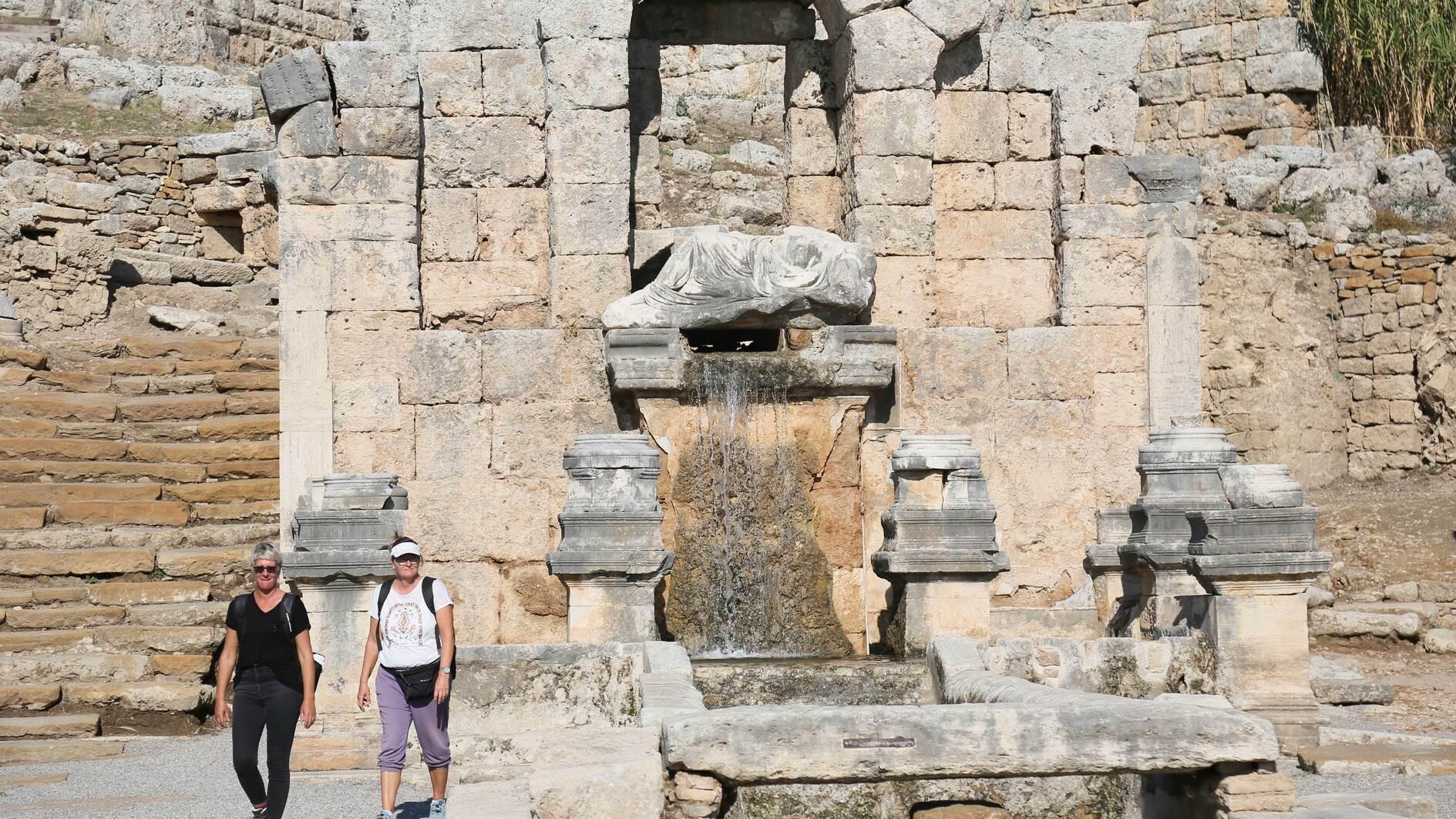
The Kestros Fountain, believed to have been built by Roman Emperor Hadrian in the second century, has started flowing once again in the ancient city of Perge in the southern province of Antalya.
The Kestros Fountain, one of the important structures of Perge, has met with water again after nearly 1,800 years. During a trial conducted in 2022, observations were made regarding the current condition of the fountain, which differs from other fountain structures in the ancient city.
Located 17 kilometers east of Antalya in the Pamphylia region within the borders of Aksu district, Perge was once the capital of the region. Excavation works, initiated by Professor Arif Müfid Mansel in 1946, and later led by Professor Jale İnan, Professor Haluk Abbbasoğlu and currently under the leadership of Professor Şebnem Sedef Çokay Kepçe, continue to this day.
Founded during the Bronze Age and considered one of the wealthiest and most beautiful cities during the Hellenistic period, Perge is listed on the UNESCO World Cultural Heritage Temporary List. After hundreds of years, the Kestros Fountain, the city's most impressive historical landmark, is once again flowing with water.
Academic Aytaç Dönmez, deputy excavation director of Perge, provided information about the studies carried out at Kestros Fountain since the time of Perge’s first excavation president, Mansel, when the goal was to restore the fountain’s water flow.
“We first conducted a trial to release water in the Kestros Fountain in 2022. We examined how the water would flow and where the leaks might occur. As a result, we concluded that the flow of water would not cause any problems, and the project could be implemented. From 2022 until now, with the support of the Culture and Tourism's Ministry’s 'Heritage for the Future' project, the Kestros Fountain has finally regained its water after 1,800 years,” Dönmez said.
‘We haven’t yet encountered a similar example’
Pointing out that Kestros Fountain is one of the unique structures of Perge, Dönmez explained that the fountain is different from other structures in the city.
“Kestros is one of the most unique structures for Perge. We know that there are other fountain structures in the ancient city, but the most important feature of this structure is that the water flows into a pool and then travels along a connected canal through the city’s north-south axis streets, and even extends beyond the city, as revealed by excavation studies. We have not yet encountered a similar luxurious, pool-like canal in any other Roman city during the Roman Empire. In this sense, the structure has a very luxurious and special status,” Dönmez said.
“When we look at the history of the structure, we see two statues of Emperor Hadrian. One is of him in armor, and the other, a naked statue, symbolizes his deification after his death. We can say that the fountain was first built during Hadrian’s lifetime in the second century, in the 130s. Perge is an extraordinary structure in both Turkish and Anatolian archaeology. Especially in terms of water engineering, special techniques and methods were used, and this has been included in many studies.”
Noting that fountains in the ancient cities of Sagalassos and Kibyra in Pisidia were also revived with water in recent years, Dönmez predicted that the number of visitors to Perge would increase after the Kestros Fountain started flowing again.
"After 1,800 years, the water is flowing again. This has brought new vitality connected with water to Perge. In the nearby ancient cities of Sagalassos and Kibyra, fountains have been revitalized, and there are people who visit these cities just to see their fountains. Moreover, Perge is widely known for its architectural and sculptural qualities. With the revival of the Kestros Fountain, we believe that the number of tourists here will increase significantly," he said.